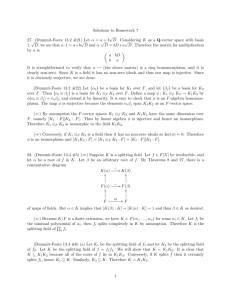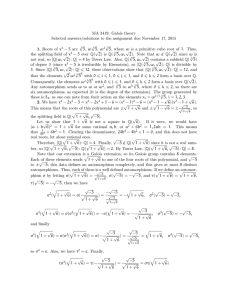MA2215: Fields, rings, and modules √ 1. Clearly, x
advertisement
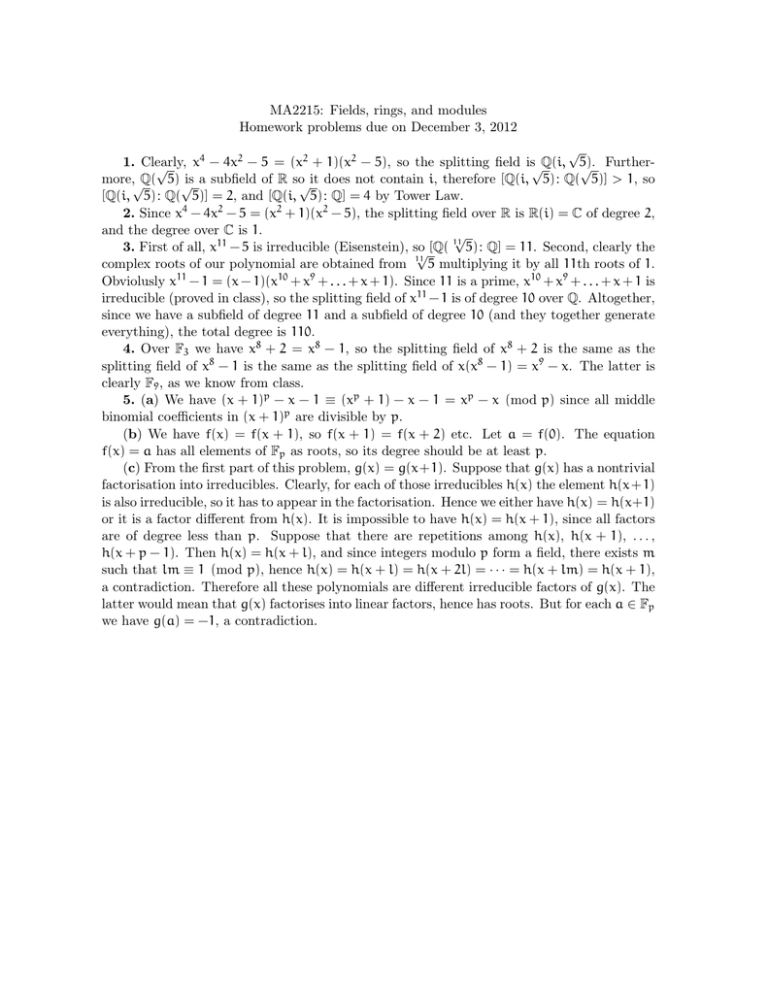
MA2215: Fields, rings, and modules Homework problems due on December 3, 2012 √ 4 − 4x2 − 5 = (x2 + 1)(x2 − 5), so the splitting field is Q(i, 5). Further1. Clearly, x √ √ √ more,√Q( 5) √ is a subfield of R so√it does not contain i, therefore [Q(i, 5) : Q( 5)] > 1, so [Q(i, 5) : Q( 5)] = 2, and [Q(i, 5) : Q] = 4 by Tower Law. 2. Since x4 − 4x2 − 5 = (x2 + 1)(x2 − 5), the splitting field over R is R(i) = C of degree 2, and the degree over C is 1. √ 11 3. First of all, x11 − 5 is irreducible (Eisenstein), so [Q( 5) : Q] = 11. Second, clearly the √ complex roots of our polynomial are obtained from 11 5 multiplying it by all 11th roots of 1. Obviolusly x11 − 1 = (x − 1)(x10 + x9 + . . . + x + 1). Since 11 is a prime, x10 + x9 + . . . + x + 1 is irreducible (proved in class), so the splitting field of x11 − 1 is of degree 10 over Q. Altogether, since we have a subfield of degree 11 and a subfield of degree 10 (and they together generate everything), the total degree is 110. 4. Over F3 we have x8 + 2 = x8 − 1, so the splitting field of x8 + 2 is the same as the splitting field of x8 − 1 is the same as the splitting field of x(x8 − 1) = x9 − x. The latter is clearly F9 , as we know from class. 5. (a) We have (x + 1)p − x − 1 ≡ (xp + 1) − x − 1 = xp − x (mod p) since all middle binomial coefficients in (x + 1)p are divisible by p. (b) We have f(x) = f(x + 1), so f(x + 1) = f(x + 2) etc. Let a = f(0). The equation f(x) = a has all elements of Fp as roots, so its degree should be at least p. (c) From the first part of this problem, g(x) = g(x+1). Suppose that g(x) has a nontrivial factorisation into irreducibles. Clearly, for each of those irreducibles h(x) the element h(x+1) is also irreducible, so it has to appear in the factorisation. Hence we either have h(x) = h(x+1) or it is a factor different from h(x). It is impossible to have h(x) = h(x + 1), since all factors are of degree less than p. Suppose that there are repetitions among h(x), h(x + 1), . . . , h(x + p − 1). Then h(x) = h(x + l), and since integers modulo p form a field, there exists m such that lm ≡ 1 (mod p), hence h(x) = h(x + l) = h(x + 2l) = · · · = h(x + lm) = h(x + 1), a contradiction. Therefore all these polynomials are different irreducible factors of g(x). The latter would mean that g(x) factorises into linear factors, hence has roots. But for each a ∈ Fp we have g(a) = −1, a contradiction.
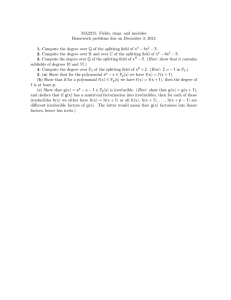
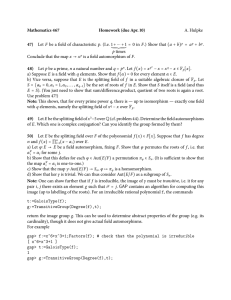
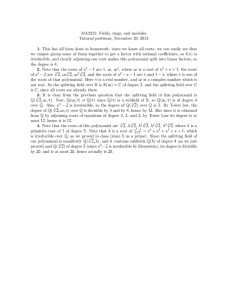

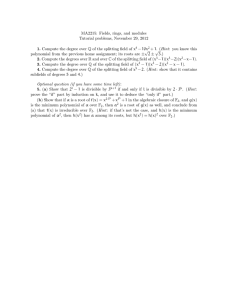

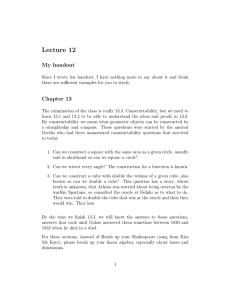

![is a polynomial of degree n > 0 in C[x].](http://s3.studylib.net/store/data/005885464_1-afb5a233d683974016ad4b633f0cabfc-300x300.png)
